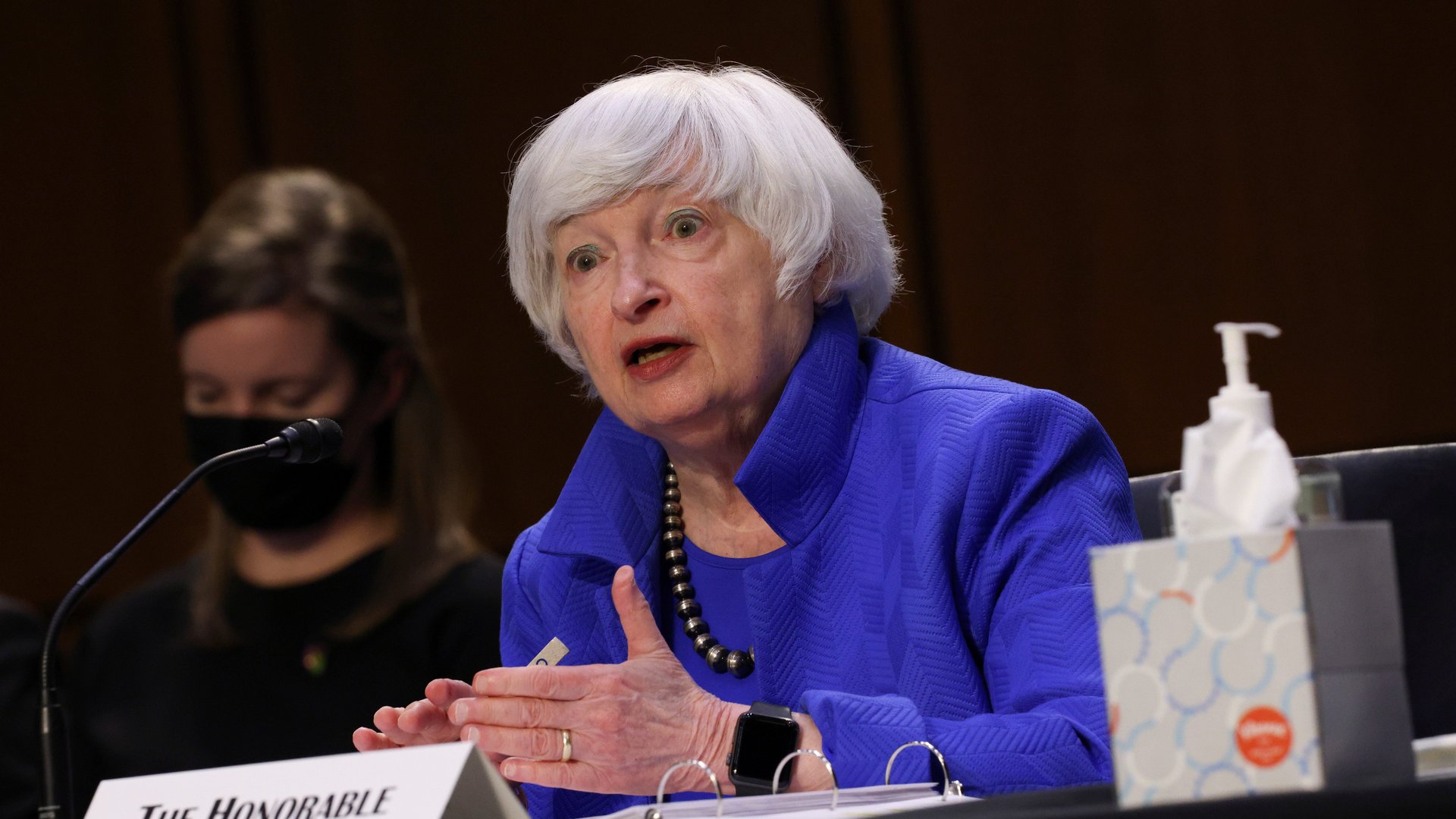What happens if Congress doesn’t raise the US debt limit?
It used to be unthinkable that the US would default on its debt. Now the question comes up every few years.


It used to be unthinkable that the US would default on its debt. Now the question comes up every few years.
The US has a legal limit on the amount of federal debt it can issue, which Congress has to raise or suspend every so often to continue paying its bills. (This borrowing, mind you, is for spending that Congress has already approved.)
Are investors worried about a US default on debt?
The country hit its $28.4 trillion ceiling on Aug. 1, 2021, and the Treasury estimates it will run out of ways to pay its obligations on October 18. You can see the (ever so slight) risk of a US default in the yield curve for Treasury bills—investors are demanding a tiny bit of extra compensation to hold the securities that come due in mid-October.
Investors are only getting a few extra basis points if they buy bills that mature around October 18, which suggests traders think the probability of a default is pretty remote. Yields increased by substantially more when Congress played chicken with the debt limit in 2013, rising by some 40 basis points or more as politicians waited until the last moment to authorize more borrowing, according to the Brookings Institution, a think tank. If history is any guide, markets will get increasingly jumpy the longer politicians take to address the borrowing limit.
Playing chicken with the debt ceiling comes at a cost. Political hijinks over the borrowing limit cost taxpayers more than $1 billion in 2011, according to the Government Accountability Office.
“We know from previous debt limit impasses that waiting until the last minute can cause serious harm to business and consumer confidence, raise borrowing costs for taxpayers, and negatively impact the credit rating of the United States for years to come,” Treasury secretary Janet Yellen wrote in a letter to Congress dated September 28.
What happens if Congress misses the debt ceiling deadline?
If the Treasury ran out of headroom to pay its bills, officials would probably delay payments to agencies, Social Security beneficiaries, Medicare providers, and contractors—and would continue paying interest on Treasury securities and avoid a default, according to Brookings.
This maneuver might protect investors in Treasury notes and bonds, but it would hardly instill confidence in the US government. Legal challenges would almost certainly arise, and it’s hard to predict how investors would react if the Treasury were to suspend payments to agencies and Social Security beneficiaries. Much would probably depend on how long the impasse lasted and whether investors in Treasury securities believed they would continue to be prioritized, according to Brookings fellows Wendy Edelberg and Louise Sheiner.
Regardless, the economy would suffer. To keep making interest payments, the Treasury would likely have to cut spending by around 40%, according to the Bipartisan Policy Center. Such a sharp disruption in spending would tear through the US economy, making it difficult for everyone from Social Security beneficiaries to government contractors to pay their own bills, and in turn damaging confidence while disrupting spending and investment.
If those kinds of cuts lasted for two months, a 2013 analysis by research firm Macroeconomic Advisers estimated the disruption could cost the US some 3.1 million jobs. Similar research by the Federal Reserve that year, which assumed the debt limit remained unchanged for several weeks, estimated that the stock market would take a 30% hit, while the US dollar would drop 10%.
But those are just best guesses. As Fed policy makers wrote in 2013, there’s no historical example of the issuer of the world’s “safe” asset and reserve currency voluntarily defaulting on its obligations.